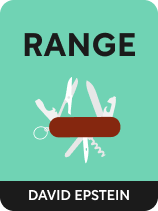

This article is an excerpt from the Shortform book guide to "Range" by David J. Epstein. Shortform has the world's best summaries and analyses of books you should be reading.
Like this article? Sign up for a free trial here .
What is the difference between strategy versus tactics in the context of decision-making? Which approach is more effective?
David Epstein, the author of Range, insists that strategy is more important than tactics. In the past, tactical decision-making was the norm, but in the modern-day, abstract and strategic thinking are replacing the tactical approach.
Here’s why strategy matters more than tactics.
Strategy Matters More Than Tactics
Epstein argues that specialization is becoming more obsolete as time goes on. To help explain why, he distinguishes between two modes of decision-making: tactics and strategy.
Tactics are instinctual procedural responses to certain repeated patterns. You recognize a situation and immediately know what to do in response. For example, Epstein notes that chess experts primarily use tactics. They recognize game states and board positions, then utilize the appropriate memorized counterplay. Tactics are all about instinctively doing things you’ve practiced before.
Strategy, on the other hand, is all about broad, abstract understanding. By combining past experience with higher-level reasoning, humans can make effective decisions in situations they’ve never experienced before. For example, Netflix employed the unorthodox strategy of operating at a loss for about a decade, borrowing over sixteen billion dollars since 2011 to keep the lights on. This strategy is based on the idea that original content is a far more sustainable investment than licensing rights.
Epstein asserts that, generally, specialization teaches tactics while generalism teaches strategy. And in the modern world, strategy (abstract decision-making) is what matters.
| The Value of Subconscious Tactics This isn’t to say instinctive tactics are useless in modern times—in fact, we use tactics far more than we realize. In his book Skin in the Game, author Nassim Nicholas Taleb criticizes the “rationalist” school of thought for over-attributing human behavior to innate complex strategy instead of recognizing simpler tactics. For example, he quotes “rationalist” and evolutionary biologist Richard Dawkins (The Selfish Gene), who argued that, at some subconscious level, the brain of a baseball player trying to catch a pop fly is calculating incredibly complex differential equations in order to determine where to stand. In reality, however, the baseball player has subconsciously picked up on a much simpler tactic—fix your gaze on the flying ball, and run toward it at a speed that keeps the ball steady in your field of vision. Taleb uses this example to make the point that we vastly overestimate the potential of human strategy. While Epstein focuses on the creative potential of human strategy, Taleb focuses on its fallibility. In contrast, even though tactics can only function in narrow situations, they’re incredibly reliable in those situations. Walking, driving, and biking all involve sets of internalized tactics, and for the most part, we do those tasks extremely well. |
In the Past, We Only Used Tactics
However, in the strategy versus tactics argument, tactics used to come out on top. In the distant past, there was no use for abstract strategic thinking. Epstein cites the work of psychologist Alexander Luria, who studied isolated villages in modern-day Uzbekistan and Kyrgyzstan that were entirely untouched by industry of any kind.
The villagers in these communities were entirely unable to think in abstractions or classification. When asked to name colors, they used concrete descriptions such as “cotton in bloom,” or “decayed teeth.” When shown a picture of three adults and a child and asked which one did not belong, one villager insisted that they all must stay together—it was the boy’s job to fetch things for the working adults.
The premodern villagers had no need to learn strategy because they thrived by learning tactics: Growing food and cotton requires repeated procedures in predictable situations.
Today, however, strategy is what helps us succeed. Epstein describes the Flynn effect, the phenomenon that global IQ scores are rising over several generations, requiring tests to be constantly re-standardized to a new level of average intelligence.
The Flynn effect shows that as the world becomes more and more modernized, our brains are adapting to a greater demand for the ability to think conceptually and identify abstract patterns.
Epstein argues that just as the premodern villagers’ brains adapted to think concretely in order to succeed, this notable adaptation in our brains reflects how the world is changing. Our increasingly conceptual way of thinking is a result of widespread scientific classification—for example, the labeling and organization of every part of the body—as well as the economic rewards promised to professionals who can conceptualize strategically, such as entrepreneurs and scientists.
Epstein asserts that the ability to think strategically is humans’ greatest strength. While tactics can certainly be valuable, they can also more easily become obsolete.
| The Plastic Brain The brain’s ability to rewire itself in response to our environment is called “neuroplasticity,” and it explains why Luria’s villagers thought in an entirely different way than city folk. Neuroplasticity research took off in the late 1970s, when researchers first detected microscopic changes in the brain’s wiring caused purely by external experience. As demonstrated by Luria’s villagers, the guiding principle behind neuroplasticity is “use it or lose it.” When the brain is repeatedly directed toward a specific task, new synapses form and neurons shift function in order to make that task easier in the future. If parts of the brain remain unused, they will wither or shift in function. For this reason, neuroplasticity has changed the way we treat stroke victims—instead of allowing them several weeks of “rest,” allowing time for unused neurons to die, stroke victims are given incremental training as soon as possible, in order for the brain to repair the parts that were destroyed. Neuroplasticity allows the brain to do things we would never expect. Dementia is a purely genetic disease, so it’s easy to assume that there’s nothing we can do about it. You can’t change your genes, after all. But recent research into neuroplasticity has found that certain behaviors can strengthen the parts of the brain that dementia would attack, reducing the risk of getting dementia by up to 60%. Specifically, regular vigorous exercise has been shown to be the best tool for fighting dementia. Perhaps the most shocking example of the incredible power of neuroplasticity: Children are able to survive hemispherectomies in which half of their brains are removed, as the remaining hemisphere adapts to perform the functions of one full brain. |

———End of Preview———
Like what you just read? Read the rest of the world's best book summary and analysis of David J. Epstein's "Range" at Shortform .
Here's what you'll find in our full Range summary :
- Why it's better to be proficient in a range of skills rather than becoming a specialist in one
- Why you're never “too late” to pursue something you’re interested in
- Why the nontraditional background of a generalist gives them an edge






